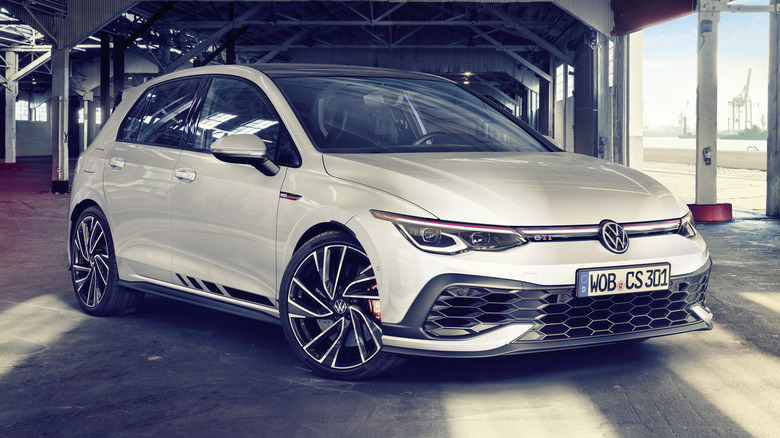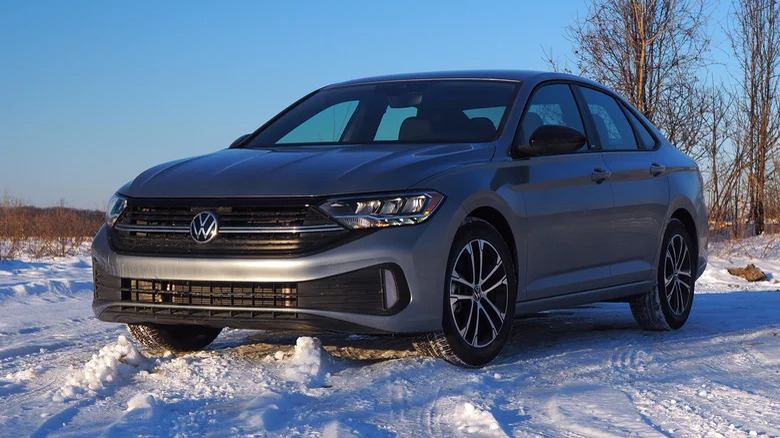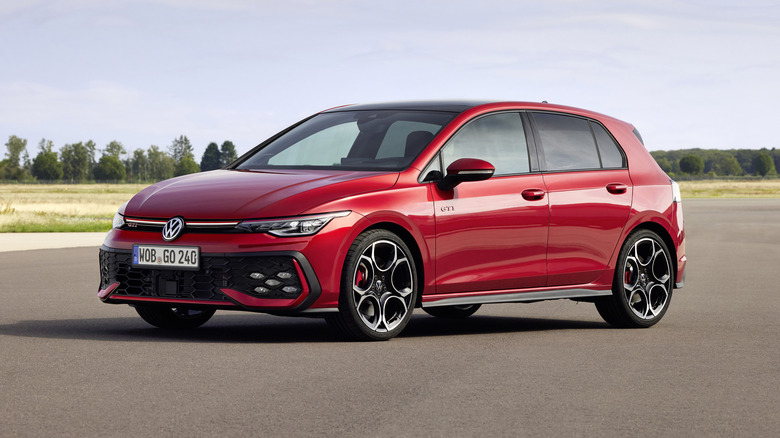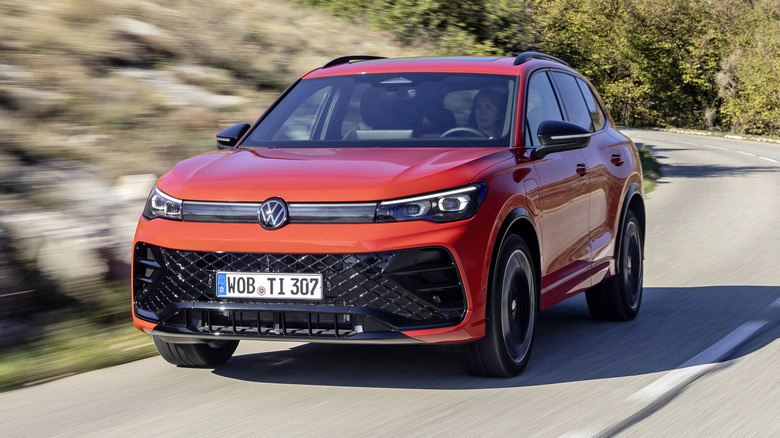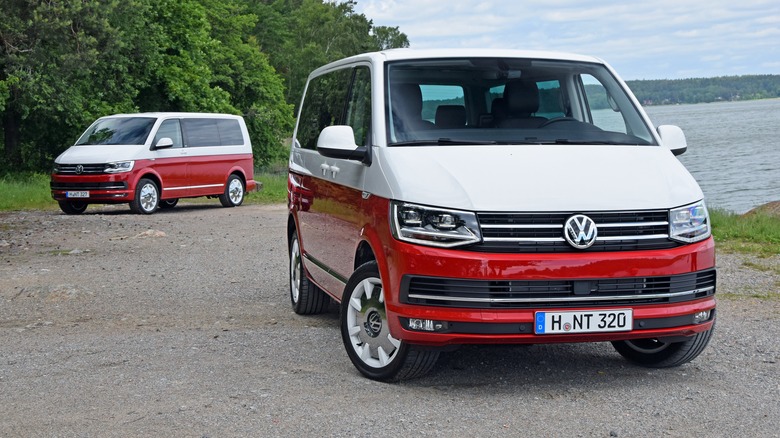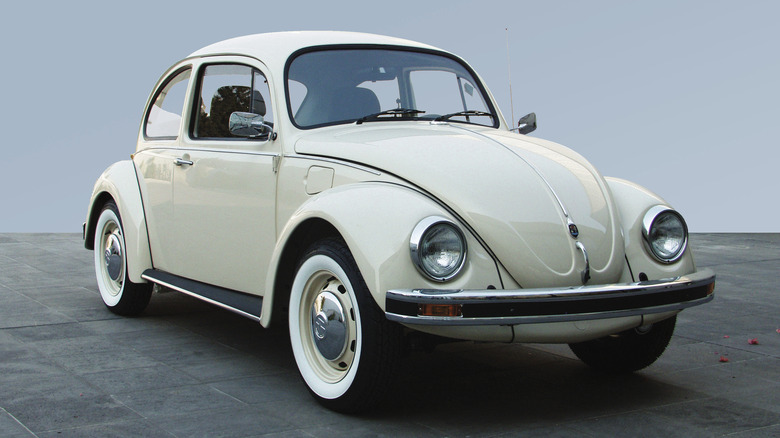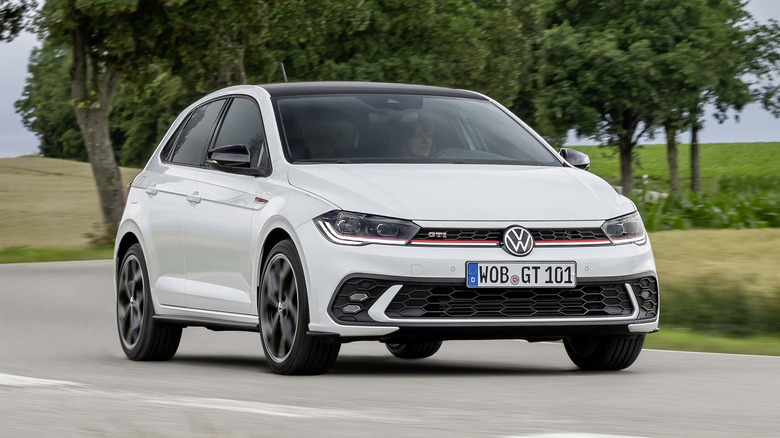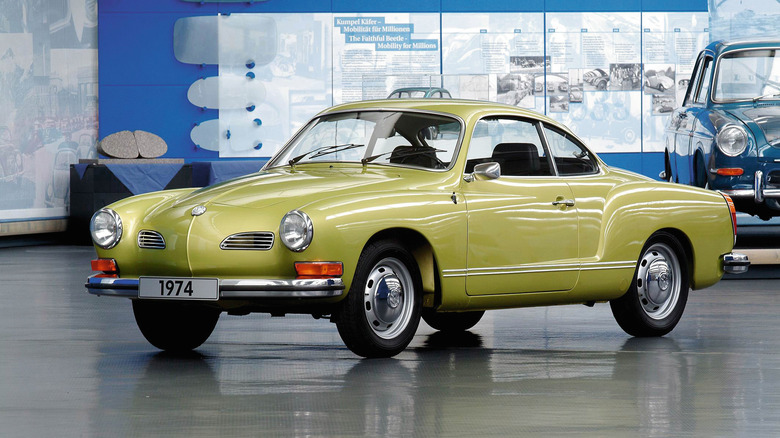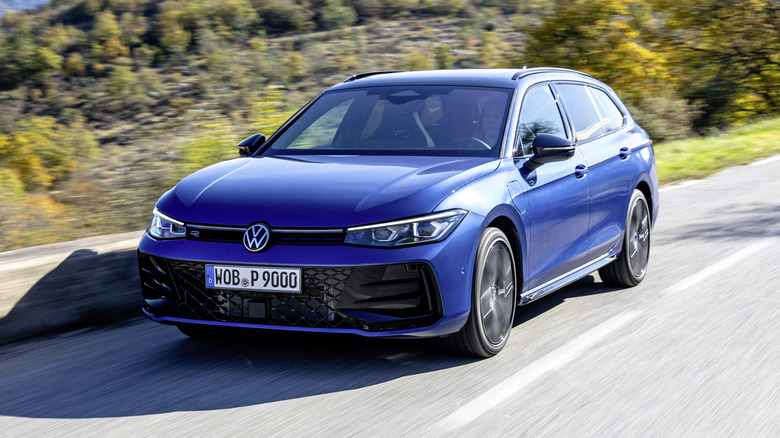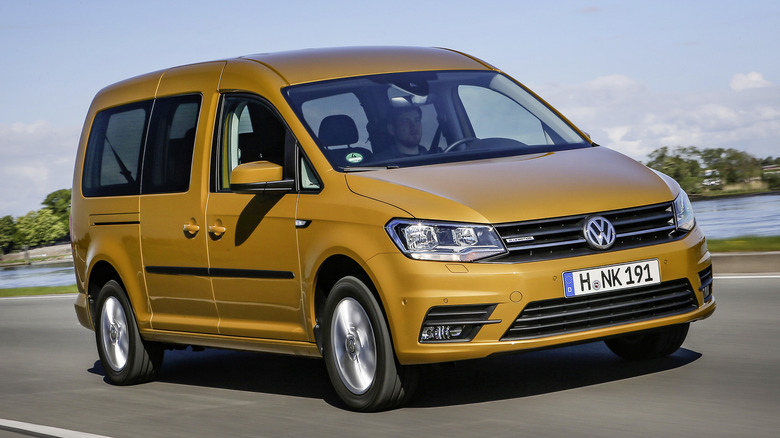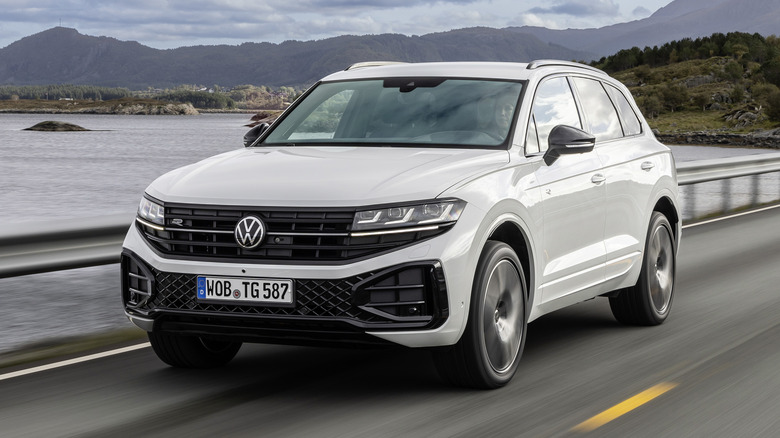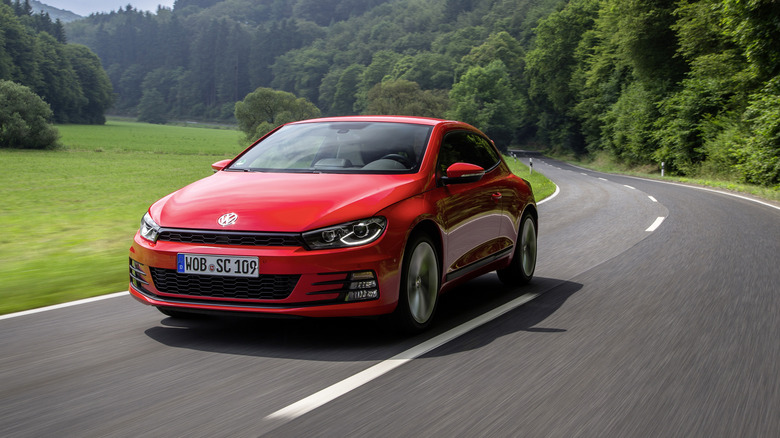11 Of The Most Successful Models In Volkswagen History
Emerging from the chaos of postwar Germany's fractured automotive industry, the Volkswagen brand has grown over the decades into one of the world's largest and most influential carmakers. It sells millions of vehicles every year and has operations in almost every automotive market on the globe, offering everything from compact hatchbacks to pickup trucks.
Volkswagen's modern success would never have been possible were it not for its bestselling classic models, with a few nameplates standing out from the rest as being particularly influential in its history. However, alongside those decades-old icons, Volkswagen's more recent models have also proved to be just as appealing to buyers. Some of the brand's most recently launched models have shot straight to the top of sales charts in their respective segments, in turn influencing the direction of rival brands' lineups.
Whether they're classic or current, we've rounded up a selection of the brand's most successful models to date, taking into account not only sales numbers but also how much influence each car has had on its respective segment. Each of these vehicles has proven to be a class leader in both metrics.
VW Jetta
First launched in 1979 as a Golf derivative, the Jetta carved a niche of its own and today remains one of the brand's most recognizable nameplates. It's also one of the bestselling, with more than 18 million units sold, over three million of those in the U.S. The Jetta was, in its initial form, essentially a Golf with some minor adaptations to enable the fitting of a larger trunk. It was affordable, well-built, and reasonably powerful for the era, all elements that would be further built upon with the launch of the Mk2 in 1985. By 1991, the Jetta was recording sales numbers double that of the Golf in North America.
The Mk3 appeared in 1992 and added a new engine lineup, including a turbodiesel, but the basic formula remained unchanged. The Jetta was still a Golf with a trunk and continued to sell well, just like its hatchback sibling. It proved successful in both North America and Europe over the following generations, although in more recent years, sales of sedans as a segment have begun to slip.
While the rise of SUVs and crossovers mean that Jetta sales figures aren't as rosy as they once were, they're still impressive nonetheless. Current variants like mid-range Jetta Sport continue to provide a good balance between affordability and practicality, while the GLI shines as the top-spec pick for drivers who can afford a little extra upfront for more driving fun.
VW Golf
Marketed through eight distinct generations over five decades, the Golf is Volkswagen's best-selling car ever. More than 37 million examples have been produced to date, with countless variants spawned during that lifespan. Arguably, the most famous of all is the Golf GTI, but other variants, including the Golf R, Golf Cabriolet, and cult favorites like the Golf Cross Country, all have their own fanbases.
The first generation Golf was designed by Giorgetto Giugiaro as a replacement for the long-serving Beetle. Its sales success saw it become the benchmark for both European and Japanese hatchback manufacturers. Some manufacturers even went as far as enlisting Giugiaro to design a rival hatchback to the Golf — the Lancia Delta is perhaps the most famous example. Giugiaro's original design was updated for the second generation Golf, and it would take until the launch of the Mk3 in 1991 for the car to see any notable visual changes.
Following generations built on the car's success, with each one making iterative improvements to the formula without ever changing it too much. Today, the Golf remains the benchmark hatchback in Europe, with the most recent Mk8 launched in 2020. The Golf range is topped by the Golf R, which offers more than 300 horsepower yet keeps the same mix of everyday driveability and practicality that made the original a hit half a century ago.
VW Tiguan
It might not have been around for as long as many of Volkswagen's most revered nameplates, but the Tiguan has already etched its place in the brand's history books. The SUV outsells every other current Volkswagen model and has shifted more than seven million units since it launched in 2007. Part of this success is down to the Tiguan's global appeal — Volkswagen says that the model is offered in more than 80% of countries worldwide, with its production facilities churning out one Tiguan every 35 seconds in 2019.
Like virtually every carmaker, Volkswagen was affected by the Covid pandemic and supply chain shortages but has bounced back in recent months. The company has said that it expects that rebound to continue, specifically highlighting the new generation Tiguan as a key driver of sales over the coming years. However, the Tiguan lost its bestseller crown in Europe in 2023 to the smaller T-Roc. It's too early to call the T-Roc one of VW's most successful models just yet, as it only launched in 2018, but it seems the consistently strong sales of VW's SUV lineup should keep both the Tiguan and the T-Roc at the top of the sales charts for the foreseeable future.
VW Type 2/Transporter
It's been sold under many names over its decades on sale, but whether you call it the Bus, Transporter, Vanagon, or anything else, there's no mistaking the iconic Volkswagen Van. The first example was built in 1950 and the van has remained in production ever since in various forms. In Europe, it's been used as everything from a commercial vehicle to a campervan, but in North America it's best remembered as the vehicle of the hippie movement of the '60s.
Later generations sold in much lower numbers in America until the model was axed in 2003, coinciding with the end of T4 Transporter production. The van has continued to be a common sight across Europe in the decades since then, and in fact, all following Transporter generations offered notable improvements over the T4, which is considered a low point in the model's history.
Volkswagen has also diversified its range in recent years, which has led to the slightly confusing situation of three separate van generations currently in production at once. The T6.1 remains on sale in Europe as a campervan and a commercial vehicle, the T7 Multivan is a Euro-only passenger minivan, and the ID. Buzz is an electric reinvention of the classic van that's set to launch in America for 2025.
VW Beetle
The original "people's car" began mass production in 1945, shortly after Germany had surrendered in the Second World War. It's the car that helped rebuild not only the German auto industry but, by extension, Germany itself, and today remains beloved across the world. It's not quite Volkswagen's best-selling car ever – that title goes to the Golf – but with over 23 million examples sold, few other cars can claim to be as popular. The Beetle received many small changes over its years on sale, mostly to improve economy, comfort, or safety, but its basic appearance remained unchanged from its introduction right up until 2003 when the last classic Beetle rolled off the production line in Mexico.
It was replaced by the New Beetle, which took heavy design inspiration from the classic but was ultimately a much more modern car underneath. While it has plenty of fans, the New Beetle also has plenty of critics and never managed to achieve quite the same level of universal recognition as the original. Slipping sales saw the Beetle eventually retired in 2019, with bosses telling Autocar in 2023 that a revival in the EV era was not on the cards as "certain vehicles ... have had their day." Even if it's seemingly gone for good, the high number of classic Beetles still on the road and the large fanbase that surrounds them should ensure that they remain a common sight at enthusiast meets for many decades to come.
VW Polo
Slotting in Volkswagen's range below the Golf, the Polo debuted in 1975, just a year after its stablemate. It's now in its sixth generation and has sold more than 18 million units since it first launched. The car has always remained centered around the brand's claim of being "small on the outside [and] big on the inside," prioritizing smart packaging above all else. Indeed, the car has remained steadfastly compact even as other models in Volkswagen's range have ballooned in size over the years, with the modern Polo being a small car even by European standards. It's currently the smallest passenger car that VW offers in Europe, with the brand having retired its Up supermini in 2023.
Much like the Golf, the Polo's styling remained similar for its first two generations, then received a more thorough exterior and interior overhaul for the third generation. Each following generation has received more substantial styling changes alongside a variety of special edition variants. The third generation Polo received a multi-colored Harlequin trim, while the fourth generation's beefed-up, plastic-clad Polo Fun would go on to influence Volkswagen's later small crossovers.
The fifth generation also made a highly successful appearance in the World Rally Championship, racking up a record number of event wins before being axed in the wake of the Dieselgate scandal. The current, sixth-generation Polo has yet to have a particularly notable special edition, but Polo fans hope that means one is just around the corner.
VW Karmann Ghia
Built by coachbuilder Karmann and styled by Italian design house Ghia, the rather unimaginatively named Volkswagen Karmann Ghia was an unlikely mix. It shared its platform and internals with the Beetle, including its 29 horsepower engine, but featured lower, flowy styling more akin to a sports car. It certainly wasn't a sports car, at least not by performance standards, but it became a hit among buyers anyway.
The coupe variant first broke cover in 1955 and a convertible variant was added to the lineup two years later. It was this convertible that made the car particularly popular in the U.S. and encouraged Volkswagen to continue to develop the model. A set of styling tweaks debuted in 1959, and in 1960, the Karmann Ghia was given a more respectable 40 horsepower engine instead of its original sluggish unit. It still wasn't enough to make the car even remotely fast, but it could at least keep up with larger traffic on the road.
The original Karmann Ghia was referred to as the Type 14, but 1961 saw the launch of the much rarer Type 34 variant. It featured revised styling with a more aggressive-looking front end, and was never offered in America. The Type 34 was a more refined car than the Type 14, but with Americans only able to purchase the older variant, sales in the once-important market slowly declined. The car was eventually retired in 1974 after almost half a million units were sold.
VW Passat
The Passat sedan precedes the Golf by a single year, being launched in 1973. It does, however, share some similarities: both were styled by Giugiaro and at several points throughout the Passat's evolution, it has shared a platform with the Golf too. Originally, it was derived from an Audi platform and continued to share architecture with VW Group's upscale brand until the launch of the B3 Passat in 1988. A decade later, the launch of the B5 Passat saw the model move back to an Audi platform, then for the B6, it became VW-based again.
The following B7 generation saw the model split between a Euro-spec Passat and an American and Chinese version, both of which were notably different under the skin. However, despite engineering two separate cars specifically for both markets, the Passat's sales figures continued to slip as buyers moved away from sedans in general. In 2022, Volkswagen announced that the Passat would be retired from North America, although it would live on in Europe.
Despite the Passat being most famous as a sedan, Volkswagen has chosen to only offer the latest generation in wagon form. It also features more prominent hybridization than the outgoing model, alongside new tech and overhauled styling. With around 30 million examples of the car sold since launch, the Passat is the second best selling Volkswagen after the Golf. Whether the latest model will prove popular enough to significantly add to that total figure remains to be seen.
VW Caddy
The Caddy is a mainstay across the European Volkswagen range, but it has its roots in America. It was first launched as the Rabbit Pick-Up in 1979 in a bid to make the Golf appeal more to American buyers and was quite commercially successful. After American sales ended, the tooling for the model was sent to Volkswagen's South African facility, and production resumed. The pickup was built for both the African and European markets and proved to be a big hit.
The second-generation Caddy, launched in 1995, was a dramatic departure from the original. It not only looked notably different, but was also sold as a panel van, a high-roofed wagon, and a pickup. The new generation continued to sell well, which paved the way for a third and fourth generation over the following two decades. Each generation remained related to the Golf platform, offering a wide range of body styles and variants to suit all kinds of commercial uses.
Now in its fifth generation, the Caddy continues to be offered in Europe today, having sold over three million examples since its launch. It's now based on Volkswagen's MQB platform, which it shares with all manner of cars, from the pint-sized Polo to the Atlas SUV. Despite being conceived in America, Volkswagen has never launched the Caddy stateside, likely due to a lack of buyer interest in small work vehicles.
VW Touareg
SUVs now make up the majority of Volkswagen's sales, totaling 54.2% of the brand's overall volume in 2023. While it has never been a volume seller in the same way as Volkswagen's smaller SUVs, the Touareg is arguably the reason that any of these SUV sales happened in the first place. It was the brand's first foray into the segment, developed in conjunction with the Porsche Cayenne and Audi Q7 and blessed with some very interesting capabilities.
In top-spec form, the first generation Touareg featured either a 6.0L W12 engine churning out 444 horsepower or a 5.0L diesel V10 engine with 309 horsepower and 553 lb-ft of torque. Only the latter was offered for the American market, but even though it was slower, it was just as impressive as the Euro-spec W12 Touareg. Thanks to a British TV show, the V10 SUV set a world record for towing the heaviest object, a Boeing 747 jumbo jet.
The second-generation Touareg arrived in 2010 and was both larger and more luxurious than the outgoing model. It also debuted the brand's first hybrid powertrain, with its supercharged V6 and electric motor generating around 380 horsepower. A third generation of the SUV was launched in 2018, and remains on sale today. In total, well over one million examples of the Touareg have been sold since launch, an impressive feat given the car's high asking price and more niche appeal compared to other successful Volkswagen models.
VW Scirocco
One of several Volkswagen cars of its era to benefit from Giorgetto Giugiaro's styling talents, the original Scirocco was launched in 1974. The Scirocco is named after a desert wind that blows through North Africa and one of several Volkswagens to be named after a wind – although the brand has claimed that this naming convention was "more of a historical accident than a planned strategy." Its name might have been only related to other Volkswagens by accident, but the car's mechanical relations were a deliberate choice. The Scirocco borrowed the engine and front-wheel drive layout of the Golf, as well as sharing the now-famous "GTI" badging for its top-spec variant.
The car was designed to be the successor to the Karmann Ghia, and maintained a similar relationship with the Golf than the Karmann Ghia had with the Beetle. It always shared architecture with the best-selling hatchback but was visually different enough to have a charm all of its own. That relationship continued with the launch of the second generation Scirocco in 1981, which offered added power and refinements but never saw the same levels of commercial success as the original.
The second generation bowed out after 1992, and it would take until 2008 for the third generation Scirocco to be unveiled. Again, it was a lower, sportier hatchback closely related to the Golf, and it quickly gained fans among a new generation of enthusiasts. Amid slowing sales, the third generation was retired in 2017.
